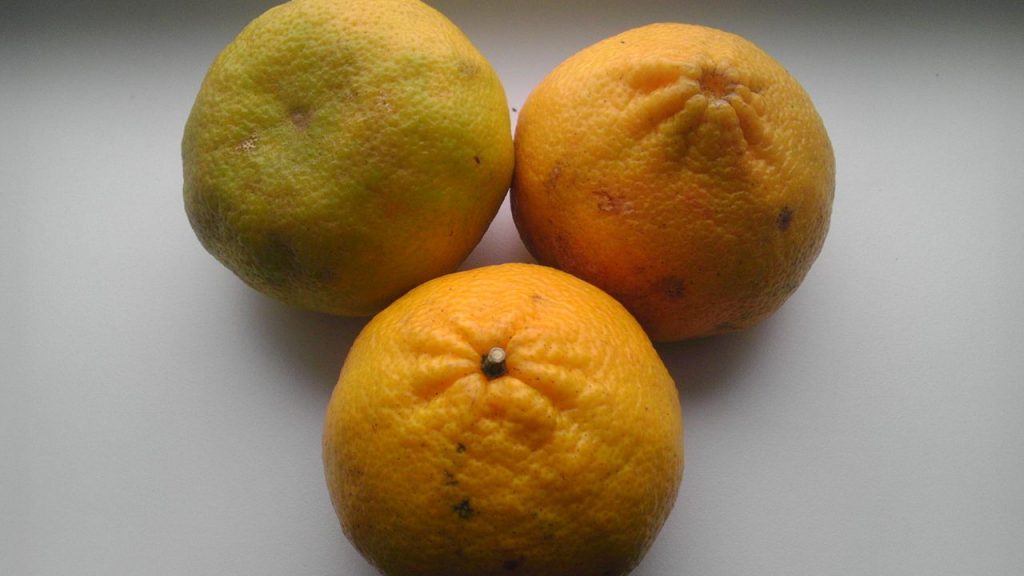[Article updated on 19/09/2023]
Fruits and vegetables are foods with a very interesting nutritional profile. They contain few calories and provide a good supply of vitamins and minerals, nutrients essential for the proper functioning of the body. Those who regularly eat fruits and vegetables have increased energy and a reduced risk of diseases such as hypertension and diabetes. In addition, these foods are very versatile and can be eaten raw, cooked, in the form of juices, and in savory and sweet preparations. In the following lines, we take you on a discovery of U-shaped fruits and vegetables.
Ugli
Ugli is the fruit of Citrus reticulata x Citrus paradisi, a citrus fruit belonging to the rutaceae family. This fruit is a hybrid resulting from a cross between a pomelo, a grapefruit and an orange. Ugli is a slightly round citrus fruit the size of a grapefruit. It has a particularly leathery, yellow-green, irregular bark, with orange spots which indicate maturity. The advantage, however, is that the peel is quite easy to peel compared to that of most other citrus fruits.
The light yellow pulp is divided into sections like that of an orange. The uglis are quite juicy and give off a pleasant sweet and aromatic scent. Taste-wise, the fruit is much less bitter than a grapefruit and has a slightly sweet flavor reminiscent of orange. Like all citrus fruits, the zest can also be used to flavor various pastries or dishes to which it gives a fresh and sweet scent.
Ugli is an excellent source of vitamin C, an antioxidant that strengthens the immune system, reduces inflammation and increases collagen production in the skin. Fruits are also rich in fiber useful for stimulating and cleansing the digestive tract. They contain small amounts of calcium, potassium and folic acid.
Udo
Udo is a stem vegetable native to Japan. It is harvested from Aralia cordata, a perennial herbaceous plant of the Araliaceae family. The edible parts are the shoots that have just emerged from the ground, as well as the stems and young shoots, to a certain extent. Originally, udo is a wild vegetable, but today it is cultivated in many Japanese regions.
Udo has a unique scent and bitter taste. Some love it, others hate it. However, its taste and aroma, as well as its texture, have made it popular as an appetizer vegetable. In Japan, the edible stem is sometimes boiled and served in miso soup. Young stems are added to soups and salads.
It must be cooked well, because the raw stems are coated in a pine-flavored resin. Before eating udo, you must slice it thinly and boil it. You can also place the slices in chilled water for an hour to remove the resin. The stalks can be cooked like asparagus.
In Korean cuisine, sprouts are generally eaten blanched, marinated, pan-fried. In Imsil County, they are also used in the preparation of maeuntang, a spicy fish stew. Udo contains chlorogenic acid, a substance that has antioxidant properties.
The essential calories and nutrients contained in 100g of Udo are as follows:
- Energy: 18 kilocalories;
- Water: 94.4g;
- Protein: 0.8g;
- Carbohydrates: 4.3g;
- Potassium: 220 mg;
- Magnesium: 9 mg;
- Phosphorus: 25mg;
- Vitamin C: 4mg;
- Vitamin K: 2μg.

